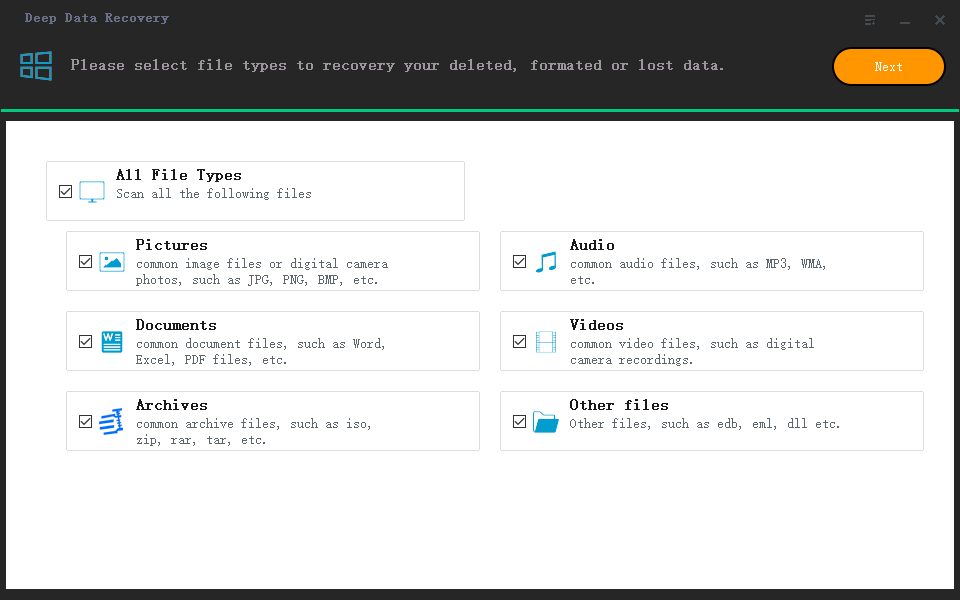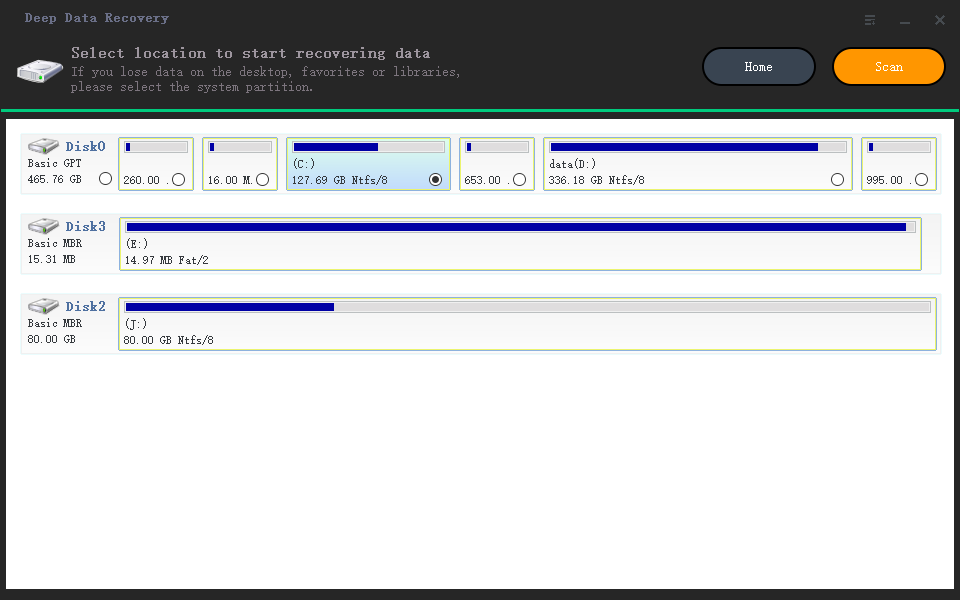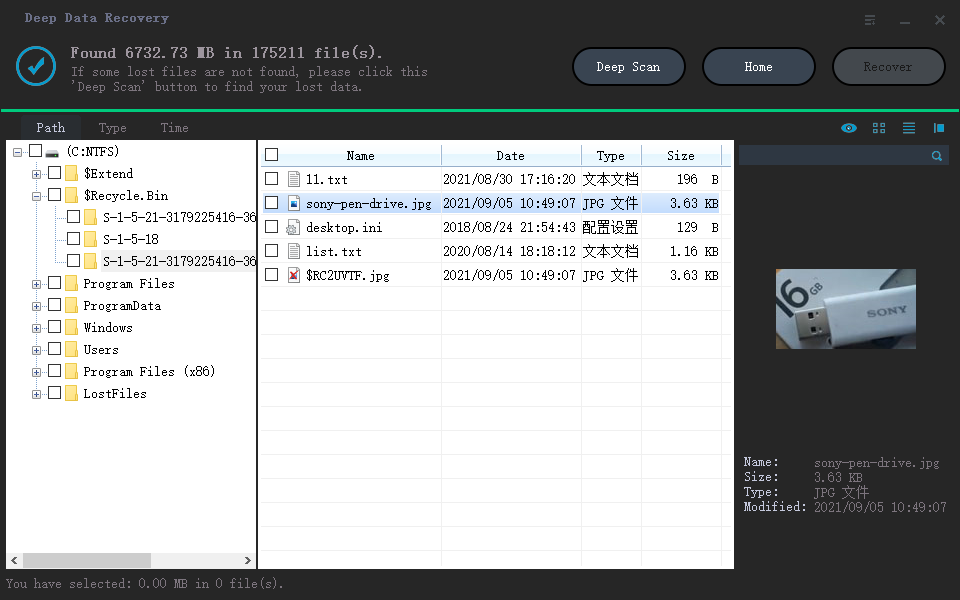How to Recover Data from Dead SSD
Quick Navigation:
- Part #1: Recover Dead SSD with Professional Driver Recovery Software
- Step-by-step Guide to Recover Files from Dead SSD on Windows/Mac
- Part #2: SD Failure Symptoms and Solutions
Solid State Drives (SSDs) have revolutionized the way we store and access data. However, despite their many advantages, SSDs are not immune to failure. In this article, we'll explore the different scenarios that can cause an SSD to fail, and what you can do to prevent or recover from such an event.
- 1. Physical Faults: Even if there are no moving parts in the solid-state drive, it is equally vulnerable as that of a mechanical hard drive. The physical faults of the components of the SSD cause the sudden death of an SSD. The reason could be due to faulty manufacturing process. For any improper manufacturing fault, especially the soldered parts, components break or they are prone to more oxidization. These result in electronic failure.
- 2. Data Corruption: The other reason for the death of the SSD is data corruption, which occurs due to logical issues. The primary reason for the data loss or malfunctioning of an SSD is bad sectors in the drive or infected data. In both cases, the is damage to the segments of the solid-state drive that leads to data loss.
- 3. Damage due to heavy blow: External factors also have an immense role to play to the functionality of an SSD. Any heavy blow to the drive causes malfunctioning or death of the drive with ease. As the circuit system is miniature in construction, even the slightest shock to the drive causes damage to the internal components, making the SSD worthless.
- 4. Short circuit: When compared with a mechanical hard drive, an SSD relies on electricity to transfer data. Power failures and fluctuations in power received by the drive causes damage to the drive. When the frequency increases, the chances for short circuit increases drastically. When such a case occurs, the data loss is imminent and destroys within a flash.
- 5. Firmware upgrade failure: Manufacturers offer a firmware upgrade to SSDs to increase the performance. Although most of them do not cause any harm, avoiding risks is beneficial. Any interruption during the upgrade process corrupts the data or death of the SSD.
Part #1: Recover Dead SSD with Professional Driver Recovery Software
The thought of losing data from a dead SSD can be daunting, but with the right tools, it is possible to recover the essential files. The Deep Data Recovery tool is a powerful and user-friendly software that can quickly identify and recover recoverable files from a dead SSD.
Your Safe & Effective Recover Dead SSD Software
- Helps in recovering SSD or other drives data lost due to dead, damaged, drive crash, unreadable, formatted drives, improper operation or restoring to factory settings and more.
- It can also restore permanently deleted files after emptying recycle bin, "shift+del" deleting or accidental deletion from the external drive.
- The undelete or unformat SSD tool fully compatible recover data from dead SSD on Windows PC or Mac.
Step-by-step Guide to Recover Files from Dead SSD on Windows/Mac
To recover dead SSD using the software, users can install the trial version of the software from the official website.
Step 1: Double-clicking the icon from the desktop will launch the software. By default, the primary window will display all the file types that it helps in recovering. Nonetheless, one can check or uncheck the file types according to the requirement and press the "Next" button.

Step 2: In the following screen, Deep data recovery will show all the partitions of the SSD, including any externally connected hard drives. Users have to select the partition of the SSD or multiple partitions. Clicking the "Scan" button will begin the scanning and recovering dead SSD process.

Step 3: The completion of the scan relies on the total size of the selected partition or partitions. Upon completion, deep data recovery displays the recoverable files. It arranges the data according to their format, making it easy for users to choose the crucial files with ease. The left pane displays the tree directory, the center pane shows the recoverable files, and the right pane displays the thumbnail of the selected file.

In addition to the standard scanning process, Deep Data Recovery offers a "Deep Scan" option for users who believe there are additional files that need to be recovered. This feature allows the software to perform a more thorough scan of the selected partition or partitions, examining each sector individually.
Part #2: SD Failure Symptoms and Solutions
Failure of an SSD manifests in different ways, which are:
- Slow transferring speeds of data
- As the Solid-State Drive (SSD) begins to fail, users may notice various symptoms. Some of the most common signs include:
- A gradual increase in bad sectors
- Manufacturing faults
If an SSD is showing symptoms of failure, such as files going missing, difficulty opening files, system crashes, slow performance, and error messages, it's essential to take immediate action to prevent further damage. Here are some possible solutions:
1. Bad sectors on an SSD can be a major concern, as they can cause data loss and system crashes. Fixing bad sectors is essential to ensure the quality health of the SSD.
2. If one can notice a change in the data transfer speeds, then it is difficult to copy all the contents of the SSD. In such instances, it is preferable to choose only the essential files across the disk and begin copying them to an external hard drive, network storage device, or cloud storage. The process is quicker than the clone disk in Windows 10, Windows 7 or macOS.
3. Taking proper care by fixing power fluctuations and avoiding physical abuses.
Related Articles
- RAW Drive Recovery - Fix and Recover Data from RAW Drive
- NVMe Data Recovery - Recover Data from NVMe SSD with Ease
- What Is Core Sync Mac? How To Use It? [Lately Explained in 2023]
Know all about what is core sync in Mac? Go through the detailed definition and process of using core sync on Mac devices. What core sync is one of the crucial questions? It is one of the necessary features to improve the seamless integration of Mac with Adobe Creative Cloud. - What Is DOS? Disk Operating System Explained (All You Need to Know)
DOS or MS-DOS was one of the leading operating systems once. This article will explain what it is if it's still used today, and how it worked. - What Is FTP? File Transfer Protocol Explained
FTP is one of the key network protocols in internet and data transfer. So, how does it work and why is it so important? This article will answer these questions and help you understand FTP in a more in-depth light.